Detox Support
Apoyo Hepático y Defensa Antioxidante 🍃
Un suplemento formulado para optimizar la desintoxicación hepática, fortalecer la defensa antioxidante y mejorar la salud del hígado. Su combinación de NAC, Cúrcuma, Cardo Mariano y Vitaminas C y E ayuda a neutralizar radicales libres, reducir el estrés oxidativo y promover una función hepática óptima.
Beneficios clave:
💊 NAC (N-acetil cisteína): Precursor del glutatión, el antioxidante más importante del cuerpo, que fortalece el proceso de desintoxicación hepática y protege contra el daño oxidativo.
💡 Cúrcuma: Potente antioxidante y antiinflamatorio que apoya las enzimas hepáticas de desintoxicación, protegiendo el hígado del estrés oxidativo y la toxicidad.
🌿 Cardo Mariano: Hierba medicinal utilizada para la salud hepática, que reduce el daño oxidativo y promueve la eliminación de metales pesados, fortaleciendo la capacidad de desintoxicación del hígado.
🍊 Vitamina C: Potencia la función antioxidante del hígado, mejorando la desintoxicación natural del cuerpo y reforzando el sistema inmunológico.
💊 Vitamina E: Esencial para la defensa antioxidante hepática, protege el hígado del daño causado por radicales libres y el estrés oxidativo.
Certificación BienMarca
Nuestros suplementos nutriADN cuentan con el distintivo BienMarca de Grupo Bien Ahora, certificación que avala su calidad, composición y formulación. Este reconocimiento garantiza que cumplen con los más altos estándares y promueven la salud y el bienestar, alineándose con las directrices de BienFest.
Detox Support
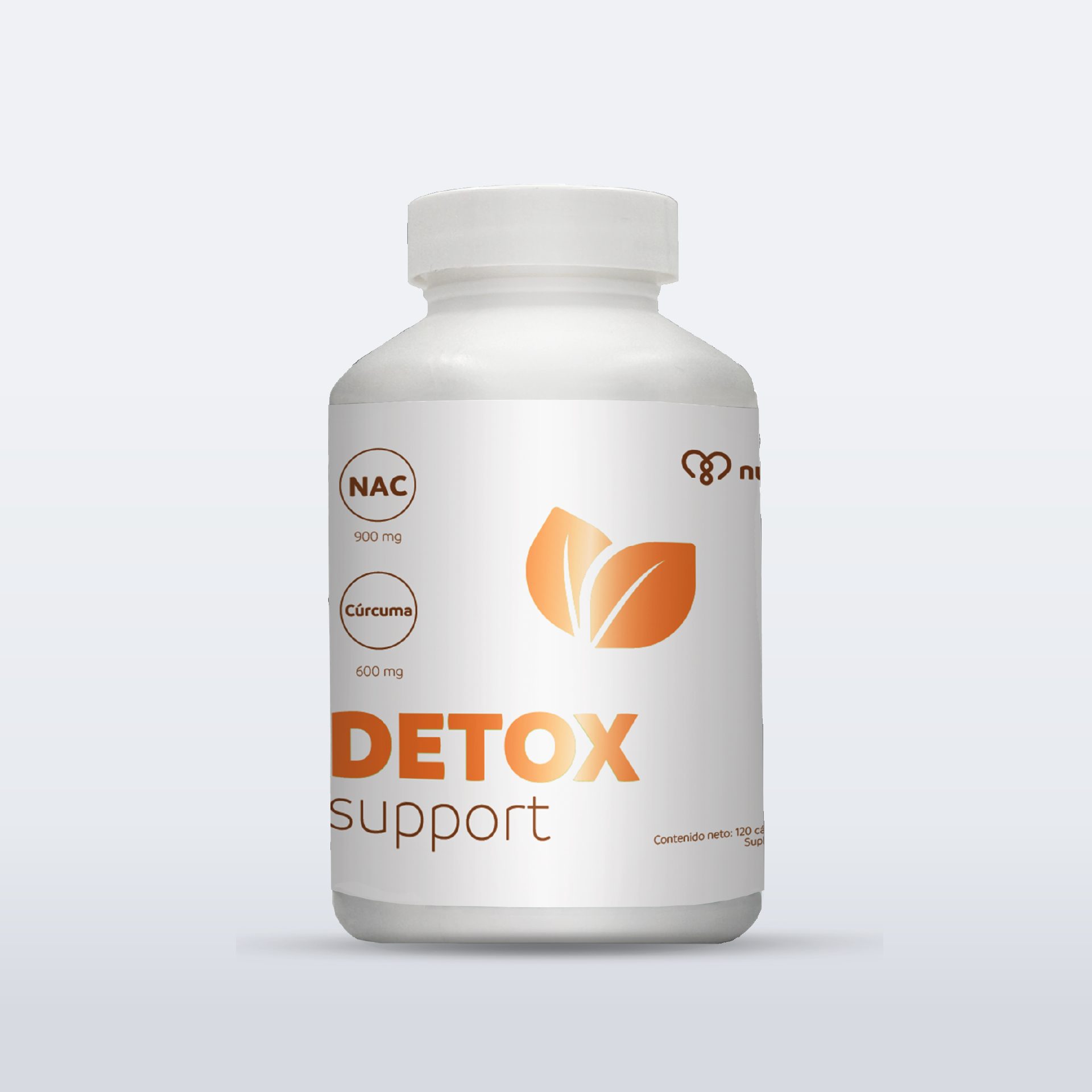
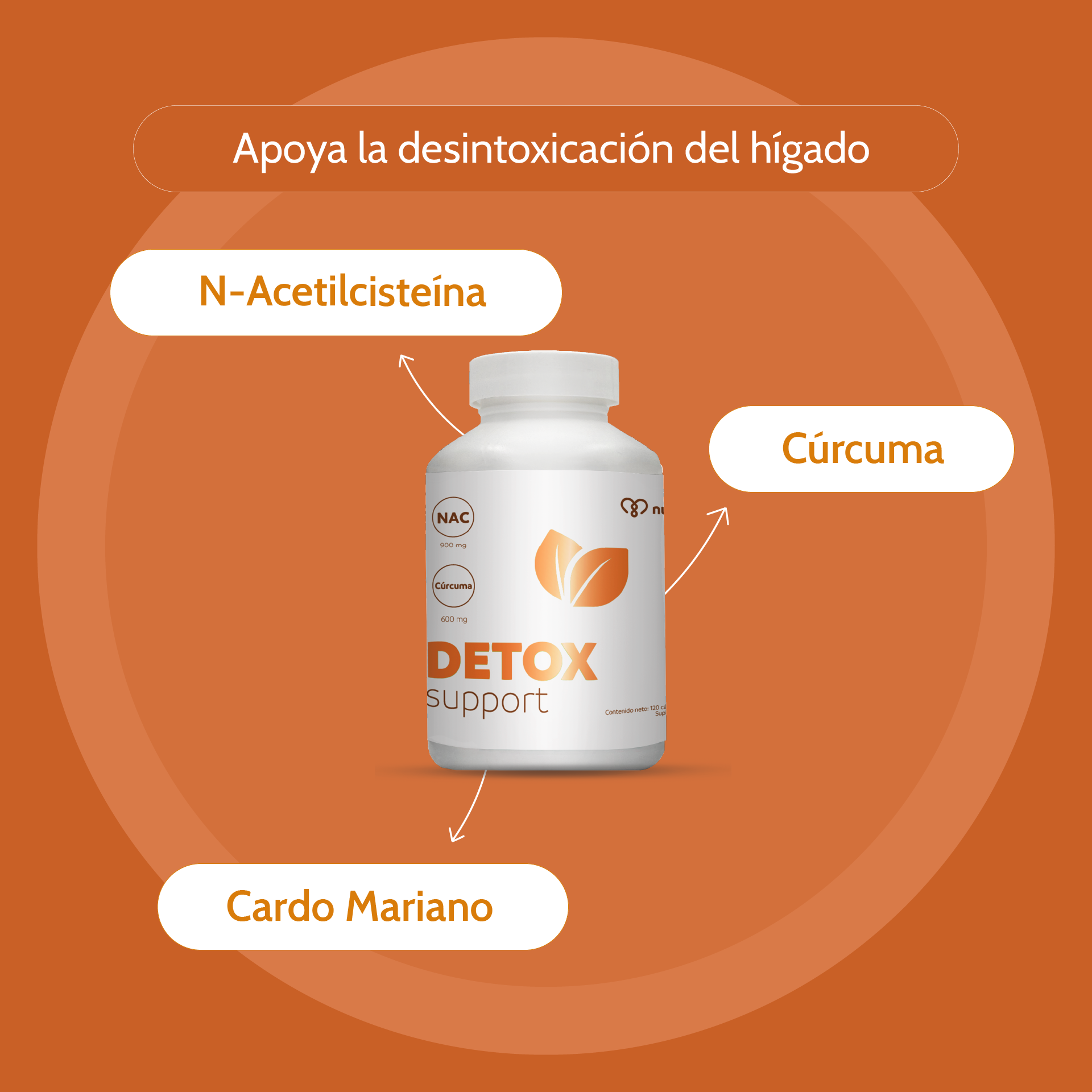
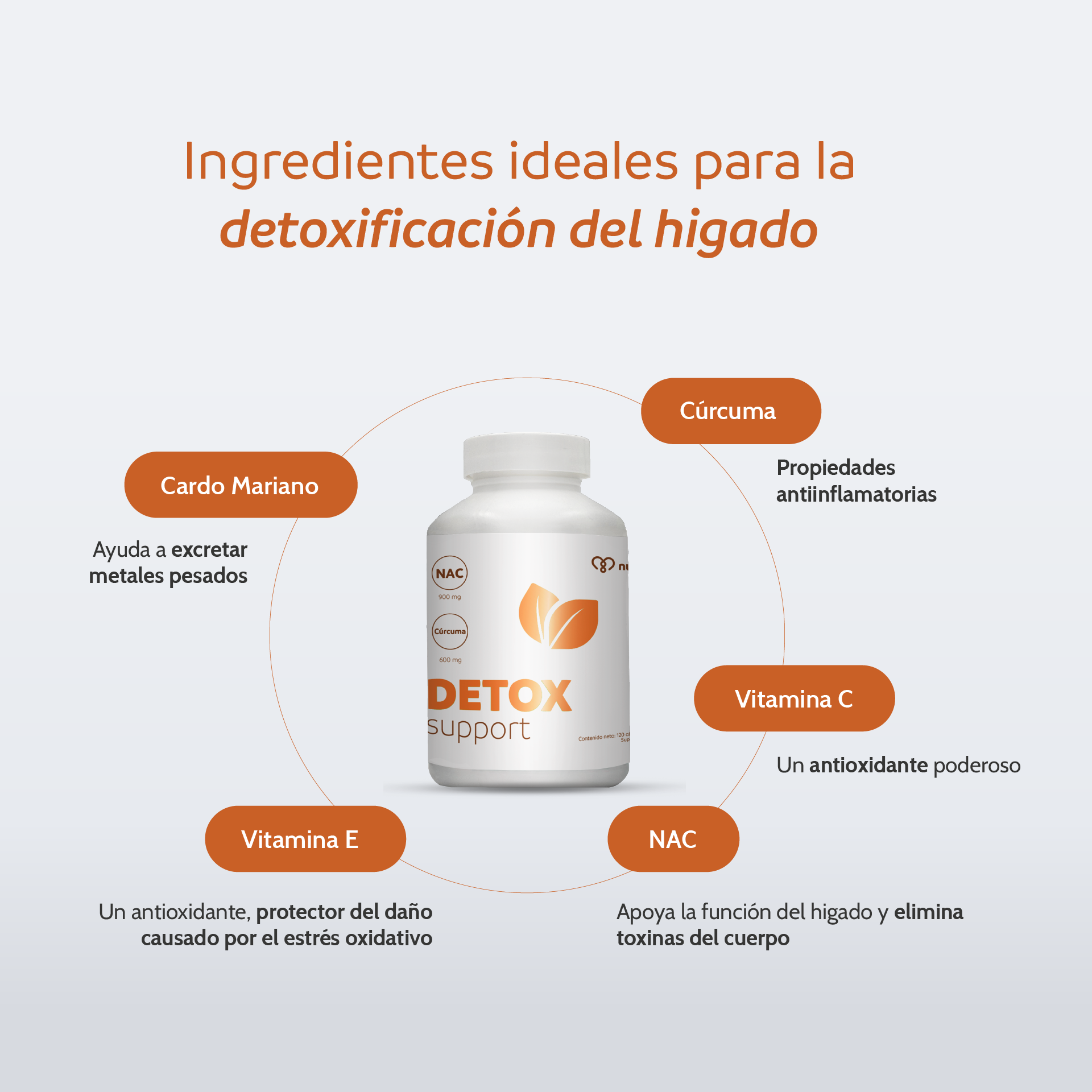
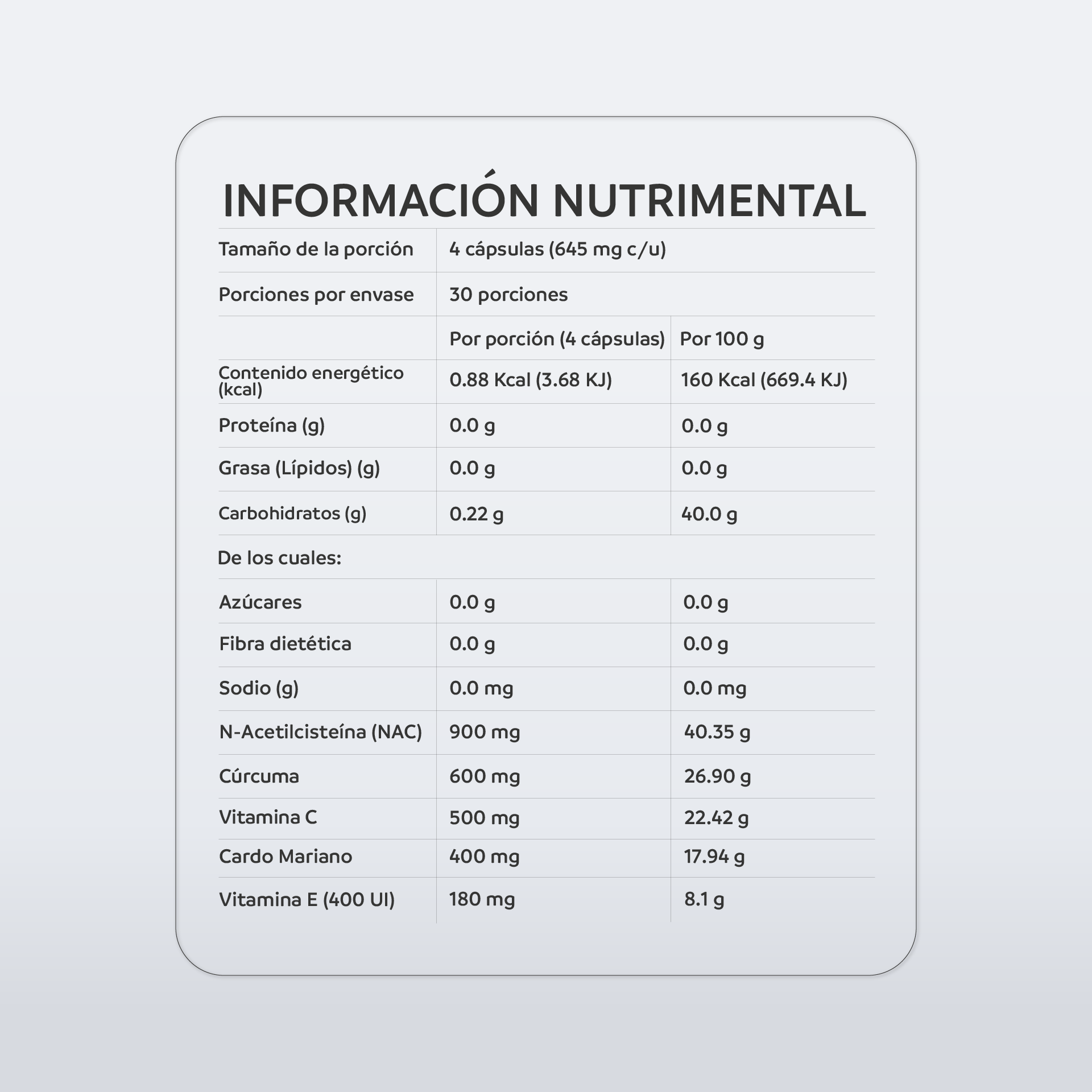
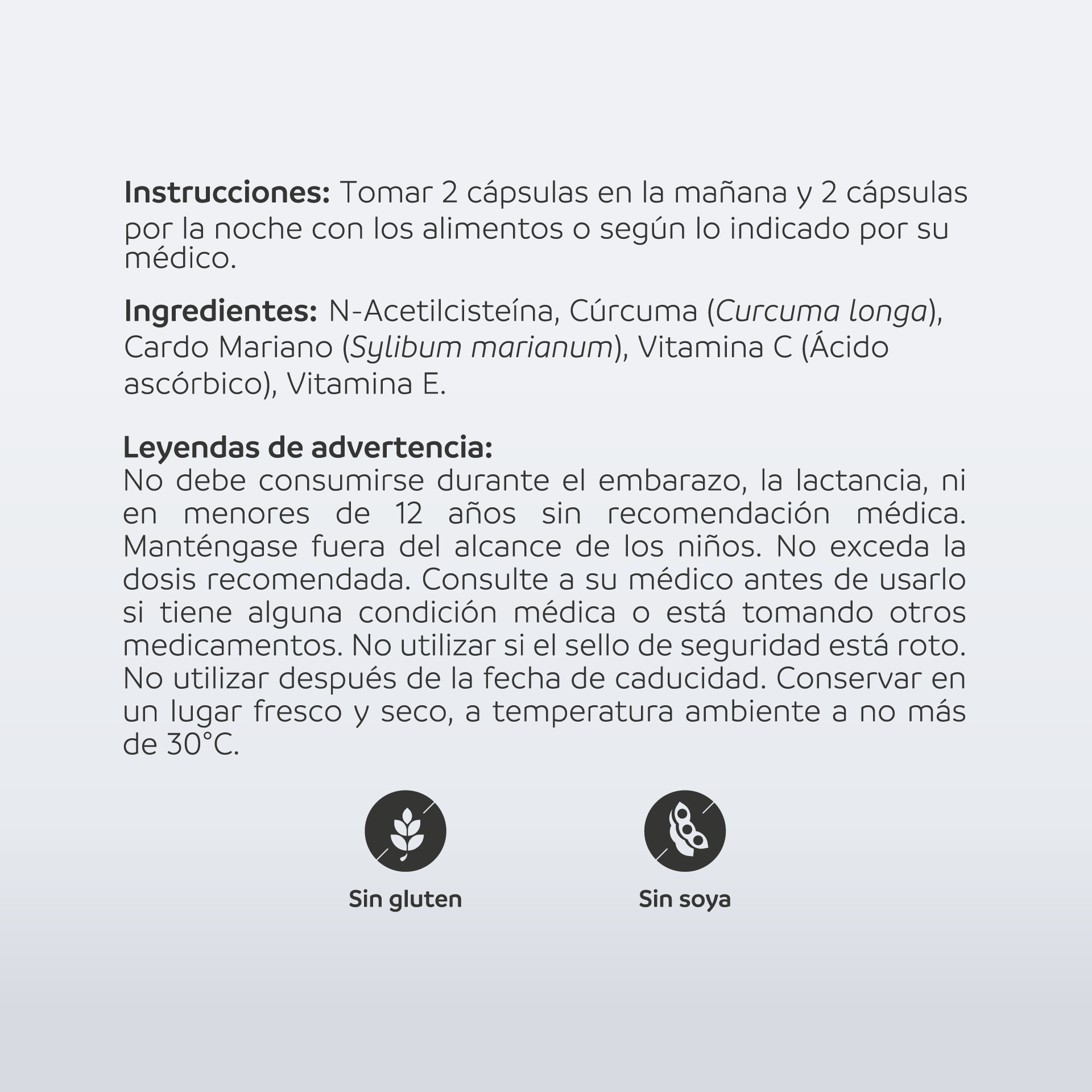
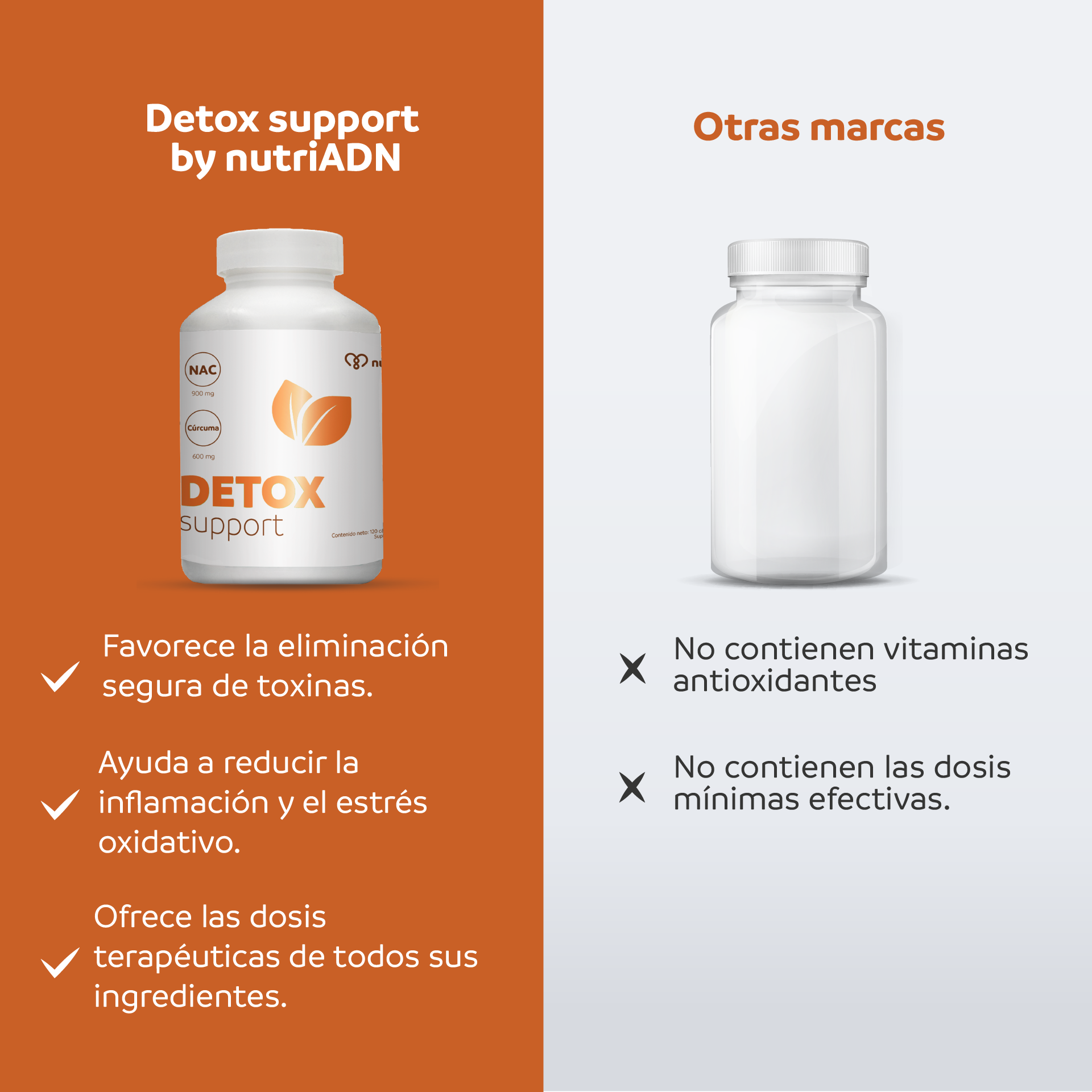
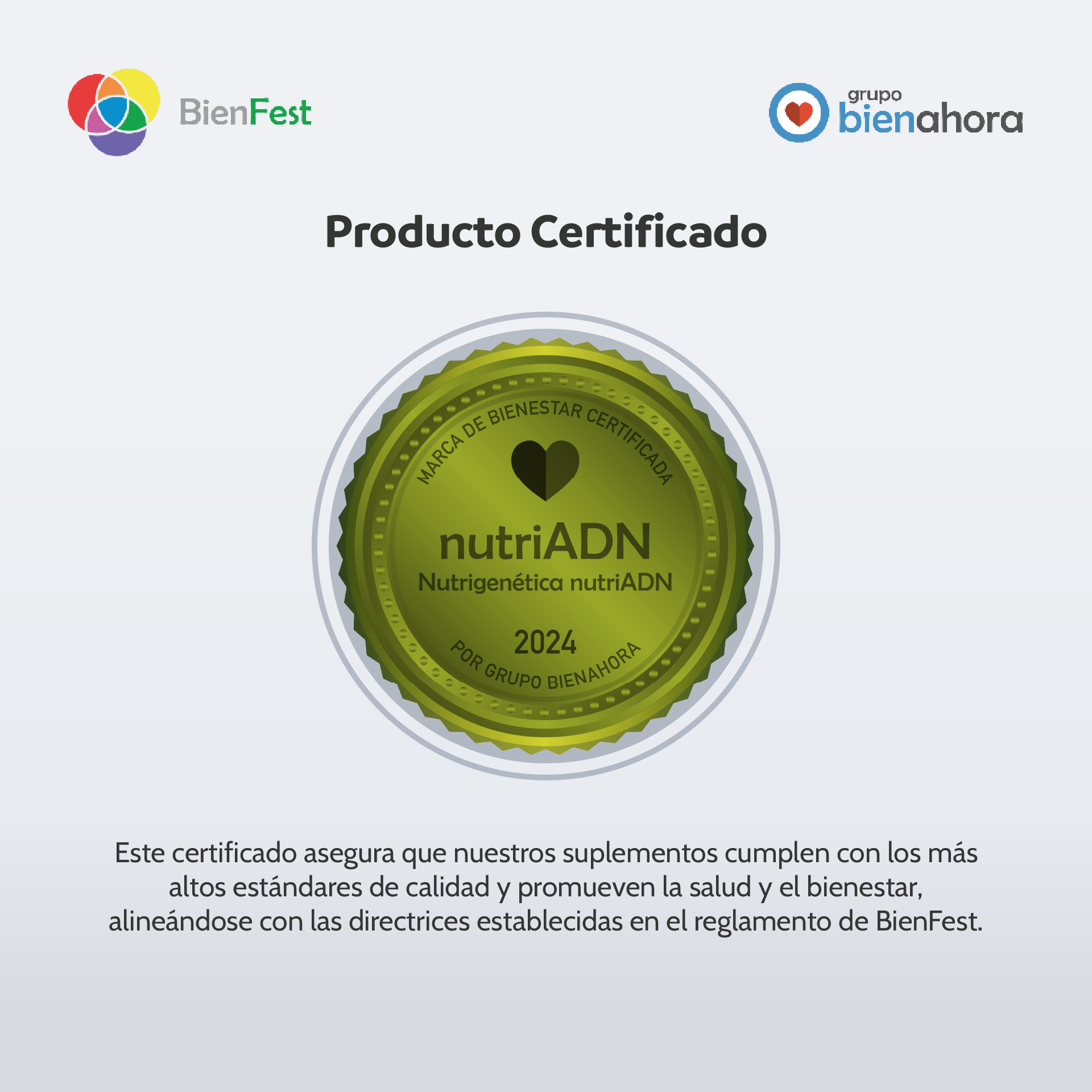
Disfruta de envío sin costo en tus compras mayores a $1,200 MXN.
Seleccionados cuidadosamente para ofrecerte lo mejor en nutrición y bienestar.
Respaldado por más de 800 profesionales que confían en nuestros suplementos para sus pacientes.

